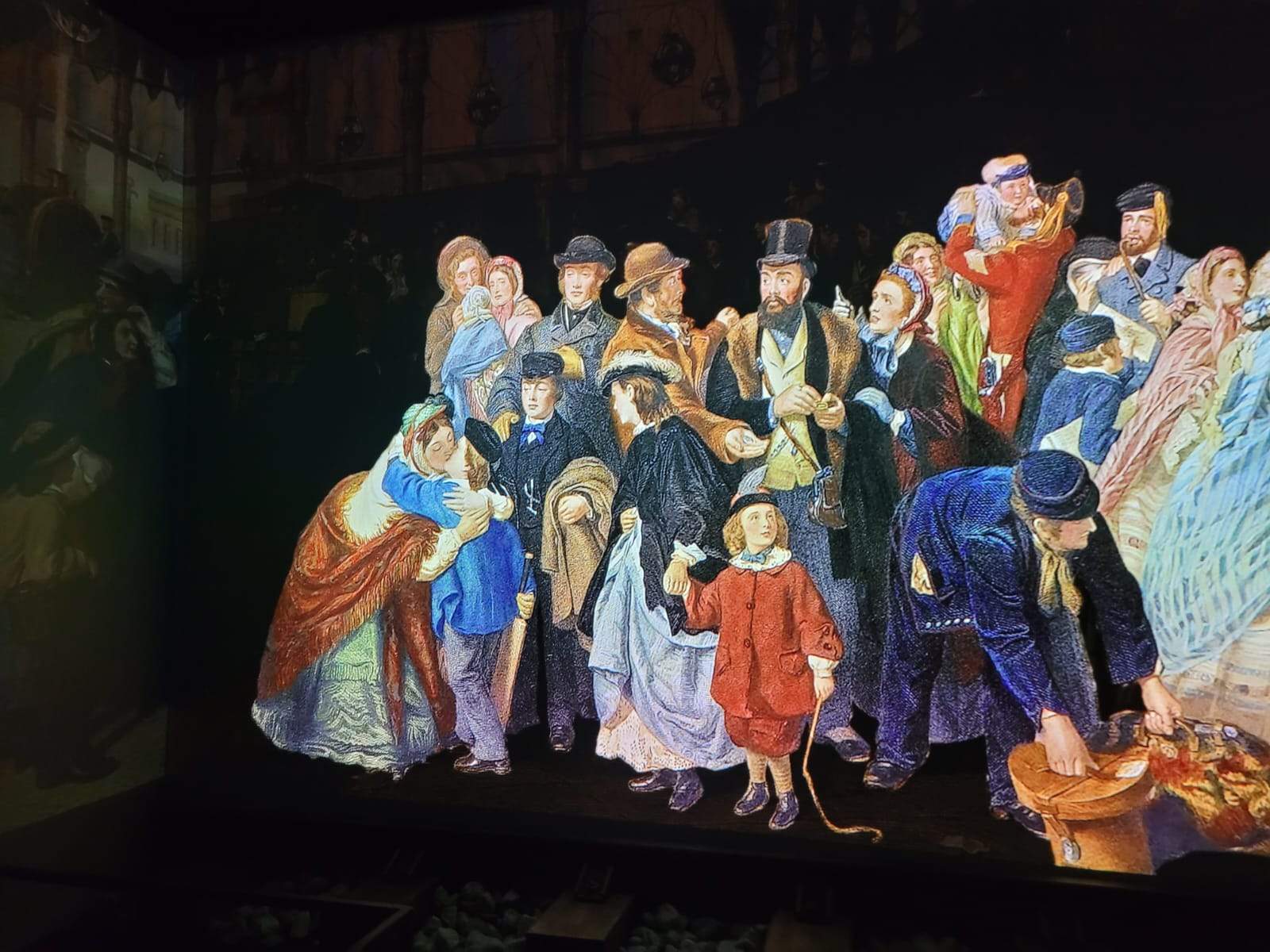An immersive exhibition to learn about the history of money. Entitled L’avventura della moneta, it is curated by Paco Lanciano and Giovanni Carrada and is a preview of the new Museo della Moneta - MUDEM that the Bank of Italy is building in the Villa Hüffer on Via Nazionale in Rome. It runs from October 31, 2023 to April 28, 2024 in the spaces of the Palazzo delle Esposizioni in Rome.
The exhibition itinerary, divided into nine sections, offers a journey through time, discovering the main events that have characterized the history of money and finance in the world. A narrator’s voice accompanies visitors through immersive projections, multimedia experiences, and rare objects that, thanks to projections, animations and sound effects, come to life telling stories, anecdotes and curiosities: from the minting of money to banknotes, up to the digital transactions that characterize modern payment systems, crossing a time span from ancient Mesopotamia to the present day. The audience thus discovers that talking about economics means talking about a very dense network of collaborations, which is hidden behind everything we use on a daily basis, and that this network can only function thanks to another network of relationships and connections that allows the resources necessary for its functioning to be moved in time and space: money and finance.
The visitor experience combines the use of modern immersive techniques with a more traditional museum approach: animations, sound effects and light games will bring to life the objects that will not remain still and silent, but will directly tell their own story.
As you walk through the history of finance, you will also have the opportunity to admire extremely rare objects, such as the terracotta tablets on which the ancient Sumerians wrote the first loan contracts; the Statere of Croesus (Lydia, 560 BC.) which, according to legend, is the first coin minted in gold and silver, depicting the image of the lion colliding with the bull; a splendid ancient edition of the Summa de arithmetica with which the Franciscan Luca Pacioli provided the merchants of his time that double-entry bookkeeping we still use today to manage increasingly complex business relationships; the ledgers of the Banco di Santo Spirito, certifying payments made to Gian Lorenzo Bernini for some of the most important works of the Roman Baroque.
The final rooms of the exhibition conclude the journey by recounting the growing presence and importance of finance today, in everyone’s daily lives and within complex and interconnected economic systems, and highlighting its benefits, risks and the role of central banks in ensuring monetary and financial stability and consumer protection.
The museum project and the exhibition that heralds it are part of the Bank of Italy’s initiatives aimed at opening new channels of dialogue with citizens, to talk about issues often perceived as complex or distant from everyday life, to overcome disinterest and overcome prejudices, in the belief that financial knowledge is essential to participate in the economic life of the country, and that financial inclusion fosters social inclusion.
The Adventure of Money is an exhibition designed with engaging narrative techniques suitable for audiences of all ages. A simplified tour is provided for elementary school children. Students and teachers will be able to visit L’Avventura della Moneta free of charge - with prior reservation - and delve into the topics covered through participation in dedicated educational workshops - designed by the Bank of Italy in collaboration with the CNR, the School of Cultural Heritage and Activities Foundation and the Opera Nazionale Montessori - that will take place in the same rooms as the exhibition. The more adult public, on the other hand, will be able to delve deeper into the themes addressed by the exhibition by participating in a series of thematic meetings in which experts - professionals and university professors - will make available to the audience the knowledge derived from their own work and research. The meetings will be held at the Auditorium Hall of the Palazzo Esposizioni.
Beginning in January, dedicated paths for deaf people will also be available: it will be possible to view the narrator’s narration by means of subtitles that will appear on smart glasses or, for those who prefer sign language, LIS videos projected on small tablets will be available. A tactile pathway will enable people with visual impairments to familiarize themselves with the objects and concepts in each of the exhibition rooms.
Visiting hours: Tuesday through Sunday from 10 a.m. to 8 p.m. The tour lasts one hour, with admissions scheduled every 15 minutes. Reservations are recommended. The exhibition is organized by the Bank of Italy in collaboration with Azienda Speciale Palaexpo and the Department of Culture of Roma Capitale.
 |
| An exhibition in Rome that is both traditional and immersive on the history of currency |
Warning: the translation into English of the original Italian article was created using automatic tools. We undertake to review all articles, but we do not guarantee the total absence of inaccuracies in the translation due to the program. You can find the original by clicking on the ITA button. If you find any mistake,please contact us.